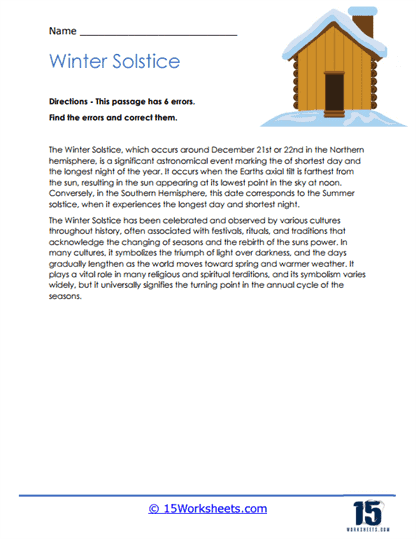Winter Solstice

Worksheet Description
The Winter Solstice, often referred to as the shortest day and longest night of the year, marks a pivotal point in Earth’s celestial cycle. Occurring typically around December 21st in the Northern Hemisphere and June 21st in the Southern Hemisphere, it signifies the moment when the North or South Pole is tilted farthest away from the Sun. As a result, this day experiences the fewest hours of sunlight throughout the year. Conversely, for the hemisphere observing the Winter Solstice, the opposite hemisphere celebrates the Summer Solstice, the longest day and shortest night of the year.
For millennia, the Winter Solstice has held significant cultural and spiritual importance across diverse societies. Many ancient civilizations observed this day with rituals, feasts, and celebrations, recognizing the rebirth of the sun and the promise of longer days ahead. Even today, various cultures and religions around the world hold festivals, ceremonies, and traditions associated with the solstice, honoring the cyclical nature of life and the interconnectedness of darkness and light.
